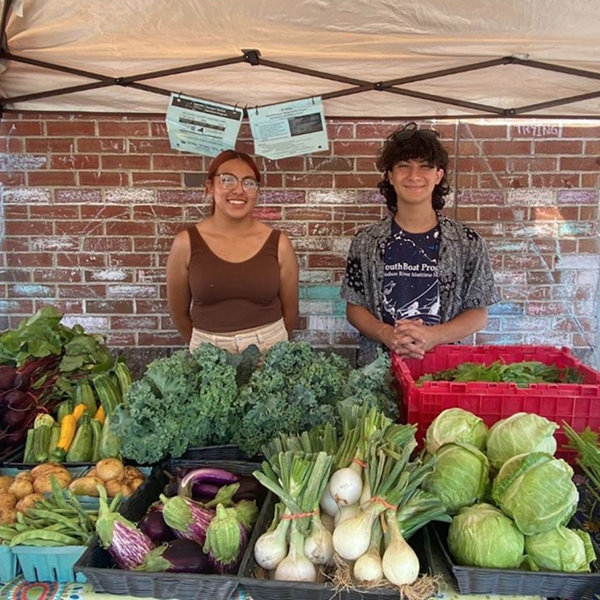The Green Revolution
I’m a physicist. I had no idea what they were doing in agriculture. A year spent trying to figure out what the Green Revolution was taught me two very basic facts about industrial agriculture and chemical agriculture. First, that it was really about converting weapons of mass destruction into products for our food system after the wars. When the markets dried up for selling chemical weapons and for making explosives from nitrogen, then the markets grew for nitrogen fertilizers, for pesticides. The Green Revolution was crafted to make that market grow.
It was a remodification of plants—especially in the Indian context, of the rice and wheat varieties—to let them adapt to chemicals. Chemicals applied for nitrogen lead to more chemicals needed for pest control, more chemicals needed for weed control. And it is never ending.
The second thing I learned about the Green Revolution, by just doing very basic arithmetic, was that we had been tricked to believe we produced more food. Yes, we produce more rice and wheat. But food is not just rice and wheat. If you are a bhat- [rice] eating Bengali or a south Indian, you need your sambal [chili relish] and you need your dhal [lentils]. And if you are from the northwest then you need your roti [flat bread] and your dhal. And you do need some mustard oil and sesame oil to give that nice flavor and spice to your food.
The Green Revolution got rid of the pluses, rid of the oil seeds, rid of the greens, and in fact brought more land under rice and wheat. We’ve done calculations that show that the increase in rice and wheat can be 100 percent explained by increase in land under rice and wheat and increased irrigation to rice and wheat. You could have achieved the same amount of increase in rice and wheat without chemicals and without new seeds. So we were led to believe there was a technological miracle taking place.
On the basis of 20 years of my work and studies in different ecosystems of India, whether it be the home gardens of Kerala or it be small terrace farms in Uttaranchal or the desert of Rajasthan, everywhere we have been able to show that with ecological inputs and biodiversity on your farm, you double and triple production of food, and you can take incomes to the skies, depending on what crops you choose.
So the idea that you have to introduce more chemicals and you have to introduce miracle seeds to increase productivity and to make rural incomes grow is not just not true, it is a blatant lie. I’m not used to using strong words unless they’re absolutely necessary, and in the area of food they are, because our ignoring this lie is what is leading to the genocide of farmers.
The seeds of suicide
In India, building upon the Green Revolution, we have globalization and the Second Green Revolution. That’s the name being given to genetic engineering. For those of you who are not familiar, the term Green Revolution and the technology package were introduced because there was a Red Revolution spreading at that time and there was panic. So they said, “How do we create prosperity through technology that will make rural areas so prosperous that through the prosperity will come peace and they will not need to have any social change?” The word “green” was mainly applied because it was about agriculture, not because it was green in philosophy. I have called it the Anti-green Anti-revolution.
The Anti-green Anti-revolution is being accelerated through genetic engineering. The Green Revolution was driven by the World Bank, the US government, state agencies, state research organizations—an entire system of matching high-cost production with distributing food at affordable prices, the amazing system of public distribution that was created in India to make it all happen. The genetic engineering revolution is being driven by global corporations. The World Bank is always willing to help of course. It never needs too much of an excuse to push the world somehow into the wrong direction. The trade agreements, the World Trade Organization, has a very big role in it, and, as the WTO collapses, there are new bilateral arrangements.
















